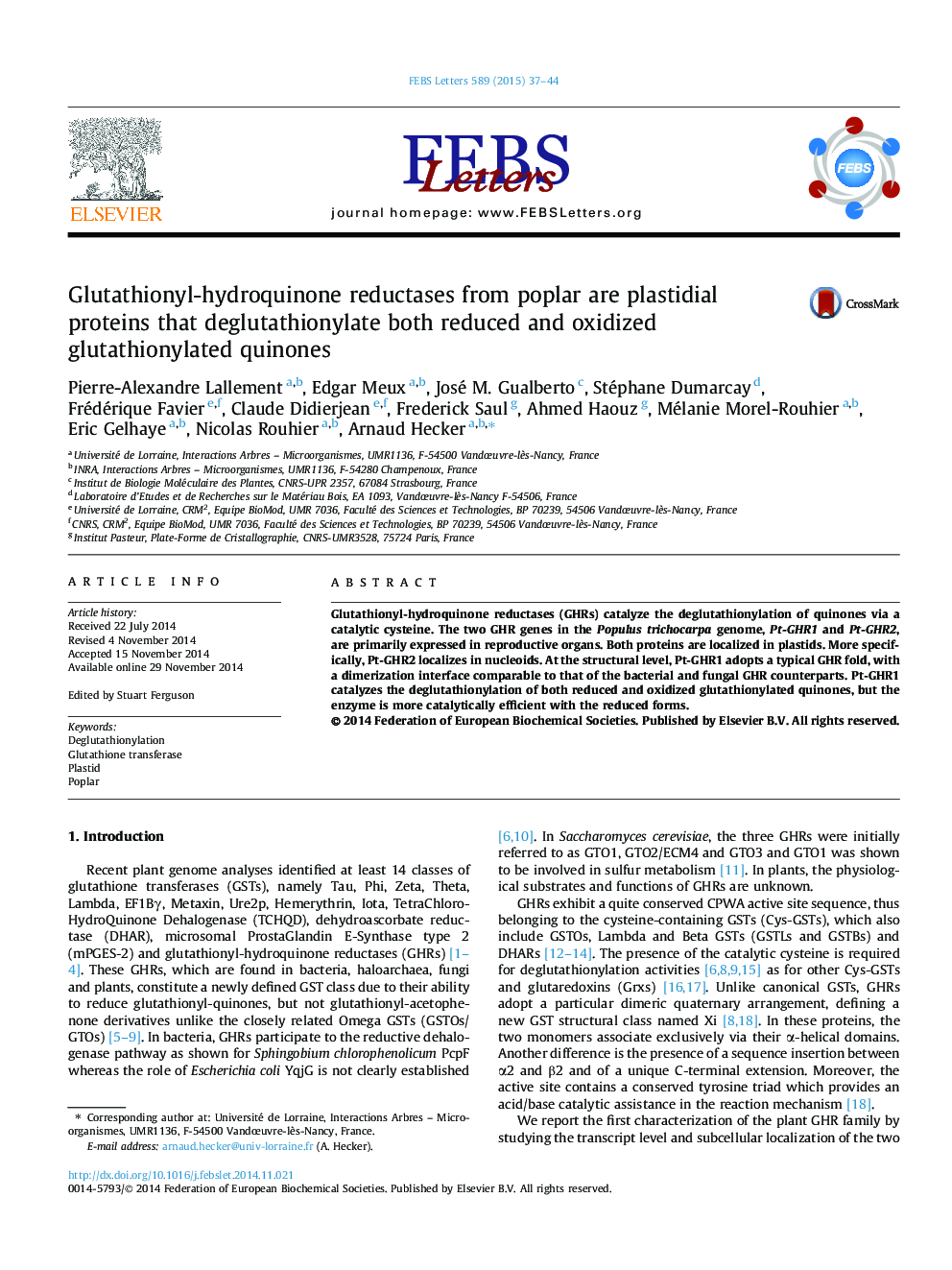| Article ID | Journal | Published Year | Pages | File Type |
|---|---|---|---|---|
| 2047616 | FEBS Letters | 2015 | 8 Pages |
•Poplar GHRs are found exclusively in plastids, particularly in reproductive organs.•Poplar GHR1 catalyzes the deglutathionylation of oxidized and reduced quinones.•The residues forming the dimeric interface of poplar GHR1 are conserved.
Glutathionyl-hydroquinone reductases (GHRs) catalyze the deglutathionylation of quinones via a catalytic cysteine. The two GHR genes in the Populus trichocarpa genome, Pt-GHR1 and Pt-GHR2, are primarily expressed in reproductive organs. Both proteins are localized in plastids. More specifically, Pt-GHR2 localizes in nucleoids. At the structural level, Pt-GHR1 adopts a typical GHR fold, with a dimerization interface comparable to that of the bacterial and fungal GHR counterparts. Pt-GHR1 catalyzes the deglutathionylation of both reduced and oxidized glutathionylated quinones, but the enzyme is more catalytically efficient with the reduced forms.
